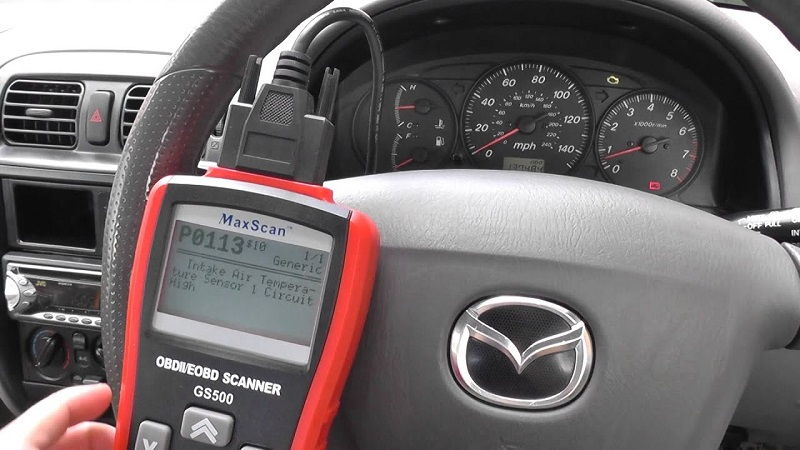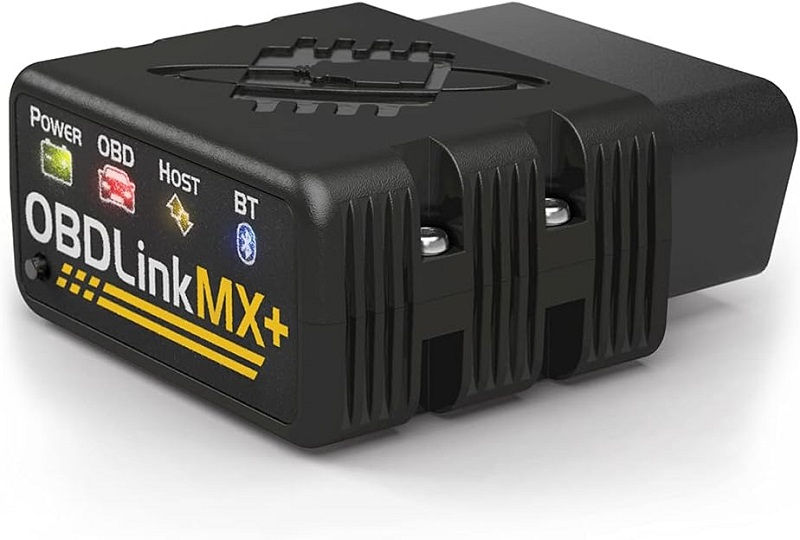This post contains affiliate links. This means I will make a commission at no extra cost to you should you click through and make a purchase [ “As an Amazon Associate, I earn from qualifying purchases.” ]. Read the full disclosure here.
Mazda 3 Check Engine Light GuideMechanic.Com When it comes to owning a Mazda 3, you may have experienced the dreaded check engine light illuminating on your dashboard.
This small warning indicator can cause anxiety and confusion for many vehicle owners. However, understanding what triggers this light and how to address it can help alleviate your concerns and keep your Mazda 3 running smoothly.
In this comprehensive blog article, we will delve into all aspects of the Mazda 3 check engine light. From the common causes that can activate this warning signal to the solutions you can implement, we’ve got you covered.
So, let’s explore the ins and outs of the Mazda 3 check engine light, ensuring you have the knowledge to tackle any related issues effectively.
Common Causes of Check Engine Light Activation

There are numerous reasons why the check engine light in your Mazda 3 may turn on. Understanding these common causes can give you a starting point for diagnosing the issue or help you communicate effectively with a mechanic. Let’s explore some of the most frequent triggers for the check engine light activation:
Faulty Oxygen Sensor
The oxygen sensor in your Mazda 3 measures the level of oxygen in the exhaust gases. A malfunctioning oxygen sensor can provide incorrect readings, leading to poor engine performance, decreased fuel efficiency, and increased emissions. When the ECU detects an issue with the oxygen sensor, it triggers the check engine light.
Loose or Faulty Gas Cap
A loose or faulty gas cap is one of the simplest and most common causes for the check engine light to illuminate. The gas cap ensures a tight seal on the fuel tank, preventing fuel vapors from escaping.
See Also: Mazda 3 Alternator
If the gas cap is loose, damaged, or missing, it can trigger the check engine light. Thankfully, this is an easy issue to resolve by tightening or replacing the gas cap.
Malfunctioning Mass Airflow Sensor
The mass airflow sensor (MAF) measures the amount of air entering the engine to determine the correct fuel-to-air ratio.
A malfunctioning MAF sensor can provide inaccurate readings, leading to engine performance issues, rough idling, and decreased fuel efficiency. When the ECU detects a problem with the MAF sensor, it triggers the check engine light.
Problematic Catalytic Converter
The catalytic converter plays a crucial role in reducing harmful emissions by converting toxic gases into less harmful substances.
Over time, the catalytic converter can become clogged or damaged, resulting in reduced engine performance, increased emissions, and the illumination of the check engine light.
Issues with the Ignition System
Problems within the ignition system, such as faulty spark plugs or ignition coils, can cause misfires, engine hesitation, and reduced power. These issues can trigger the check engine light as the ECU detects irregularities in the combustion process.
Malfunctioning EGR Valve
The exhaust gas recirculation (EGR) valve controls the flow of exhaust gases back into the engine for combustion.
A malfunctioning EGR valve can disrupt the combustion process, leading to reduced engine performance, increased emissions, and the activation of the check engine light.
Worn-out Oxygen Sensor
Over time, the oxygen sensor in your Mazda 3 may become worn out and less responsive. A worn-out oxygen sensor can provide inaccurate readings, leading to engine performance issues, decreased fuel efficiency, and increased emissions. When the ECU detects a problem with the oxygen sensor, it triggers the check engine light.
Faulty Evaporative Emission Control System
The evaporative emission control system (EVAP) prevents the release of fuel vapors into the atmosphere. Issues within the EVAP system, such as a loose or damaged gas cap, a leak in the system, or a faulty charcoal canister, can trigger the check engine light.
Defective Spark Plugs or Ignition Coils
Spark plugs and ignition coils are crucial components of the ignition system. When these components become worn out or malfunction, they can cause misfires, engine hesitation, and reduced power. The ECU detects these irregularities and triggers the check engine light.
Malfunctioning Throttle Position Sensor
The throttle position sensor (TPS) monitors the position of the throttle valve in the engine. A malfunctioning TPS can provide incorrect readings to the ECU, leading to engine performance issues, rough idling, and reduced fuel efficiency. When the ECU detects a problem with the TPS, it triggers the check engine light.
Understanding Check Engine Light Codes
Check out this OBDLink MX+ OBD2 Bluetooth Scanner for iPhone, Android, and Windows
When the check engine light illuminates, your Mazda 3 generates specific diagnostic trouble codes (DTCs) that provide further insight into the underlying problem. Understanding these codes is essential for effective diagnosis and repair. Let’s dive into the process of retrieving and interpreting check engine light codes:
Using an OBD-II Scanner
To retrieve check engine light codes from your Mazda 3, you’ll need an OBD-II scanner. This device connects to a port located under the dashboard and communicates with the vehicle’s ECU. Once connected, the OBD-II scanner can retrieve and display the relevant diagnostic trouble codes.
Interpreting Check Engine Light Codes
Each check engine light code consists of a series of letters and numbers. These codes correspond to specific issues within the engine or emission control system.
To interpret the codes, you can refer to the OBD-II scanner’s user manual or use online resources that provide code definitions and possible causes.
By understanding the meaning of the codes, you can gain valuable information to aid in diagnosing and resolving the issue.
Common Check Engine Light Codes
While there are hundreds of possible check engine light codes, some are more common than others. Here are a few examples:
P0300 – Random/Multiple Cylinder Misfire Detected
This code indicates that the engine is misfiring in multiple cylinders or in a random pattern. Possible causes can include faulty spark plugs, ignition coils, fuel injectors, or a problem with the fuel system.
P0171 – System Too Lean (Bank 1)
This code indicates that the engine is running with a lean air-to-fuel mixture. Possible causes can include a faulty oxygen sensor, vacuum leak, clogged fuel injectors, or a malfunctioning mass airflow sensor.
P0420 – Catalyst System Efficiency Below Threshold (Bank 1)
This code indicates that the catalytic converter is not operating efficiently. Possible causes can include a faulty catalytic converter, oxygen sensor, or an exhaust leak.
P0442 – Evaporative Emission Control System Leak Detected (Small Leak)
This code indicates that there is a small leak in the evaporative emission control system. Possible causes can include a loose or damaged gas cap, a leak in the EVAP system, or a faulty charcoal canister.
DIY Solutions for Common Check Engine Light Issues
While some check engine light issues require professional attention, there are several DIY solutions you can explore for common problems.
These solutions can save you money on repairs and give you a sense of accomplishment. Let’s explore some DIY solutions for common check engine light issues in your Mazda 3:
Tightening or Replacing the Gas Cap
If the check engine light is triggered by a loose or faulty gas cap, you can start by ensuring it is tightened securely.
If the gas cap is damaged or missing, it’s recommended to replace it with a new one. This simple fix can often resolve the issue and turn off the check engine light.
Cleaning or Replacing the Mass Airflow Sensor
If the check engine light is triggered by a malfunctioning mass airflow sensor, you can try cleaning it before considering a replacement.
The mass airflow sensor is usually located between the air filter and the throttle body. Use a specialized cleaner and
Cleaning or Replacing the Mass Airflow Sensor (continued)
Use a specialized cleaner and carefully spray it onto the sensor, following the manufacturer’s instructions.
Gently clean the sensor’s wires or filament, being cautious not to damage them. If cleaning doesn’t resolve the issue, you may need to replace the mass airflow sensor. Consult your vehicle’s manual or seek professional advice for the correct replacement procedure.
Replacing Spark Plugs and Ignition Coils
If the check engine light is triggered by faulty spark plugs or ignition coils, you can attempt to replace them yourself. Start by identifying the location of the plugs and coils, which can usually be found on top of the engine.
See Also: Mazda Cx-5 Catalytic Converter
Remove the ignition coils using a socket wrench and disconnect the electrical connector. Replace the spark plugs using a spark plug socket and torque wrench, ensuring the proper gap is set.
Finally, reinstall the ignition coils and reconnect the electrical connector. If you’re unsure about the process, refer to your vehicle’s manual or consult a professional mechanic.
Checking and Cleaning the EGR Valve
If the check engine light is triggered by a malfunctioning EGR valve, you can inspect and clean it to see if that resolves the issue.
The EGR valve is typically located on the intake manifold or near the throttle body. Disconnect the electrical connector and remove any bolts or screws holding the valve in place. Carefully inspect the valve for any signs of damage or carbon buildup.
If necessary, clean the valve using a specialized EGR valve cleaner, following the instructions on the product.
Reinstall the valve and reconnect the electrical connector. If cleaning doesn’t solve the problem, it may indicate a more significant issue, and professional intervention may be necessary.
Repairing Exhaust Leaks
If the check engine light is triggered by an exhaust leak, you can attempt to identify and repair the leak yourself. Start by inspecting the exhaust system for any visible signs of damage, such as rusted or loose components.
Use a flashlight to check for any holes or cracks in the exhaust pipes or manifold. If you find a leak, you can try sealing it with high-temperature exhaust sealant or using exhaust tape as a temporary fix.
Keep in mind that while these solutions may provide temporary relief, it’s important to have the exhaust system properly repaired by a professional to ensure long-term reliability.
Frequently Asked Questions about the Mazda 3 Check Engine Light
Throughout this article, certain questions may arise regarding the Mazda 3 check engine light. Here are answers to some frequently asked questions to provide further clarity and address common concerns:
How do I reset the check engine light in my Mazda 3?
To reset the check engine light in your Mazda 3, you can use an OBD-II scanner or disconnect the vehicle’s battery for a short period.
However, it’s important to note that simply resetting the light without addressing the underlying issue will likely result in the light re-illuminating. It’s recommended to diagnose and resolve the problem before resetting the check engine light.
Is it safe to drive with the check engine light on?
While it may be safe to drive with the check engine light on for a short distance, it’s not advisable to ignore the warning indicator.
The check engine light indicates an underlying problem with the engine or emission control system that should be addressed promptly.
Continuing to drive with an illuminated check engine light can lead to further damage, decreased performance, and potential safety hazards.
Can I pass emissions testing with the check engine light on?
In most cases, a vehicle with an illuminated check engine light will not pass emissions testing. The presence of an active check engine light typically indicates that the vehicle’s onboard diagnostics system has not completed the necessary self-tests for emissions test readiness. It’s crucial to resolve the check engine light issue before attempting emissions testing.
Why did my check engine light turn off by itself?
In some instances, the check engine light may turn off by itself if the issue that triggered the light is no longer present.
However, it’s important to note that the underlying problem may still exist, even if the light has turned off. It’s advisable to have your Mazda 3 inspected by a professional to determine the cause of the previous check engine light activation.
See Also: Mazda 3 Transmission Fluid


